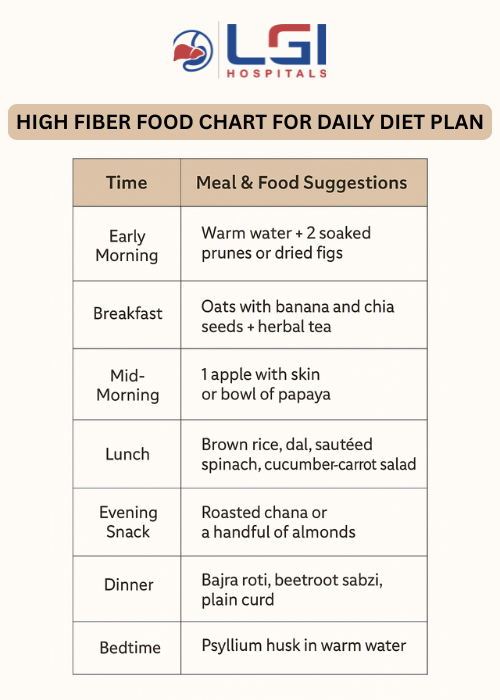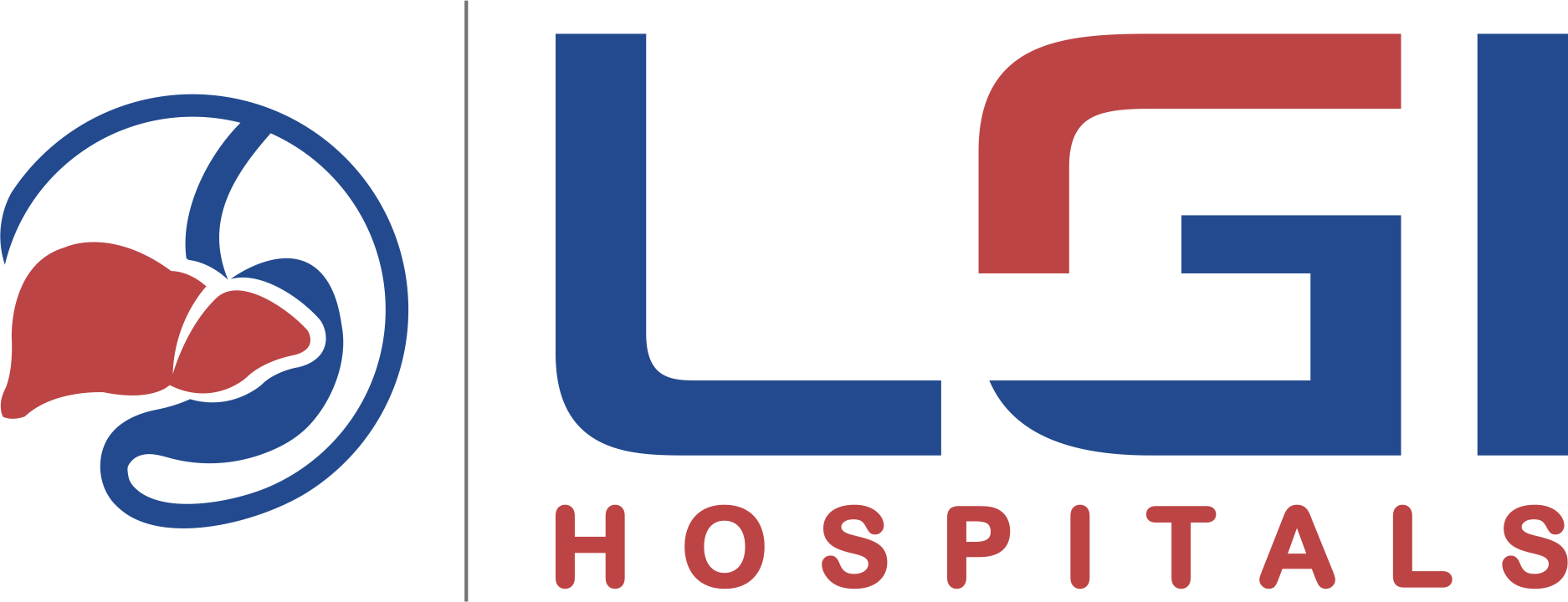Constipation and piles (hemorrhoids) are not just uncomfortable they can affect your daily routine, appetite, and energy levels. At LGI Hospital, our gastroenterology experts often treat patients whose conditions could have been prevented with simple dietary changes. One of the most powerful and natural remedies? Adding high fiber food in your diet.
In this comprehensive guide, we’ll walk you through a doctor-recommended high fiber food chart, ideal for managing both constipation and piles effectively.
Why Fiber is Crucial for Digestive Health
Fiber plays a vital role in:
- Softening stools, making them easier to pass
- Reducing pressure on the veins, thus relieving piles
- Improving bowel regularity, preventing hard stools
- Feeding good gut bacteria, which enhances overall digestion
There are two types of dietary fiber:
- Soluble fiber: dissolves in water and forms a gel-like substance, helpful in softening stools
- Insoluble fiber: adds bulk to stool and helps food pass more quickly through the stomach and intestines
A balance of both is essential for treating constipation and piles naturally.
Doctor-Recommended High Fiber Food Chart
Here’s a detailed high fiber foods chart curated by our gastroenterologists at LGI Hospital. These foods not only help relieve constipation but also support long-term gut health and reduce the risk of piles.
| Food Category | High Fiber Foods | Fiber per 100g |
| Fruits | Guava, Apple (with skin), Banana, Papaya | 2–5g |
| Vegetables | Spinach, Carrot, Broccoli, Beetroot | 2–4g |
| Legumes | Lentils, Chickpeas, Kidney Beans | 7–9g |
| Whole Grains | Oats, Brown Rice, Whole Wheat, Bajra | 6–10g |
| Nuts & Seeds | Flaxseeds, Chia Seeds, Almonds | 10–12g |
| Dry Fruits | Figs (dried), Prunes, Raisins | 5–14g |
| Supplements | Psyllium Husk (Isabgol) | 12–14g |
Tip: Always increase fiber intake gradually and drink plenty of water to prevent bloating or gas.

What Doctors at LGI Hospital Recommend
Our medical team suggests the following to naturally manage constipation and piles:
- Stick to natural fiber-rich foods, avoiding processed and spicy items.
- Incorporate gut-friendly fluids like buttermilk and warm water with lemon.
- Avoid prolonged sitting and increase physical movement throughout the day.
- Do not ignore the urge to pass stool—it worsens constipation.
If you’re suffering from chronic issues or see blood in your stools, consult a specialist immediately.
When to Seek Medical Help
While a high fiber diet can significantly reduce symptoms, visit LGI Hospital if you experience:
- Painful bowel movements
- Persistent constipation lasting more than a week
- Blood in stool or rectal discomfort
- Unexplained weight loss or abdominal pain
Timely medical consultation prevents complications like fissures, infections, or severe hemorrhoids.
Why Choose LGI Hospital for Constipation and Piles Treatment?
At LGI Hospital, we offer:
- Expert gastroenterologists
- Personalized diet and treatment plans
- Advanced diagnostic and surgical options for piles
- Natural remedies combined with evidence-based medicine
Book your appointment today for expert guidance and long-lasting relief.
FAQs
Q1: Can fiber cure constipation permanently?
It can manage and prevent constipation when included consistently in the diet.
Q2: Is a high fiber diet good for piles?
Yes, it reduces straining and softens stools, which is key for piles management.
Q3: Can kids follow a high fiber diet?
Yes, but under pediatric guidance. Include fruits, vegetables, and whole grains.

